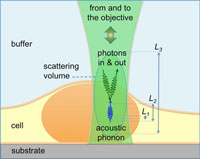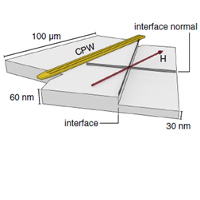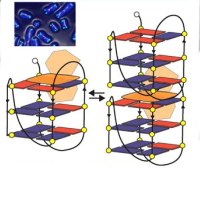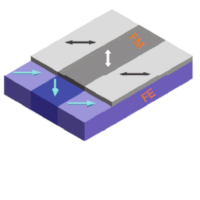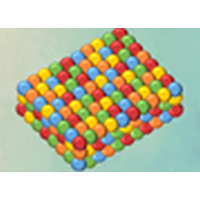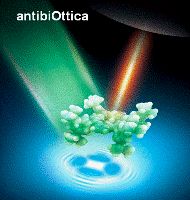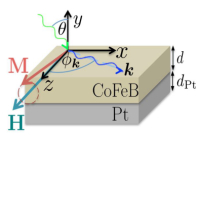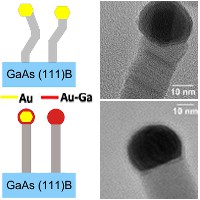Tuning the growth mode of nanowires via the interaction among seeds, substrates and beam fluxes
The growth mechanism of semiconductor nanowires (NWs) is still an argument of high interest, and it’s becoming clearer that simple pictures, such as the original vapour-liquid-solid model, fail to describe the complex behaviours observed under different growth conditions and for different materials.
|
We have studied the case of ZnSe NWs by Au seed-assisted molecular beam epitaxy on GaAs(111)B substrates. We have found that an interplay between seed-substrate interaction and elemental fluxes may occur, and strongly affect the NW growth mode. That interplay allows the tuning of the NW growth mechanism from being vapour-liquid-solid (VLS) to become vapour-solid-solid (VSS), with profound consequences on nanowires morphology and crystal quality.
|
Growth mechanism of semiconductor nanowires can be tuned changing the physical state of the metallic seeds by varying their chemical composition.
|
Indeed, during the seeds formation by annealing, a thermal-activated diffusion of Ga atoms from the substrate into the Au nanoparticles (NPs) leads to the formation of liquid Au-Ga alloy at the NPs surface. Chemical composition and physical state of these NPs are strongly affected by the Se flux. Using Zn-rich conditions, the growth of ZnSe NWs occurs through the VLS growth mode, assisted by AuGa NPs, either completely liquid or solid with a liquid shell. If Se-rich conditions are used, Ga is drained out of the NPs at the first stage of the growth, and the NW growth mechanism is switched toward the VSS mode, assisted by solid Au nanocrystals.
The growth mechanism has a profound impact on the NW morphology and crystal quality: in Zn-rich conditions straight and uniformly oriented NWs are obtained, whereas in Se-rich kinked and worm-like NWs grow, with a high density of defects. The switch from VLS to VSS is possible within a single growth and this change has effects on the wires morphology. The information obtained on ZnSe NWs may be valid in all systems where the interaction among seed, substrate and beam fluxes changes the physical state of the NPs, and provide a way to obtain an accurate control of nanowires morphology via the control of the growth mechanism.
Valentina Zannier, Vincenzo Grillo, Faustino Martelli, Jasper Rikkert Plaisier, Andrea Lausi and Silvia Rubini, Tuning the growth mode of nanowires via the interaction among seeds, substrates and beam fluxes, Nanoscale, 6, 8392 (2014) DOI

